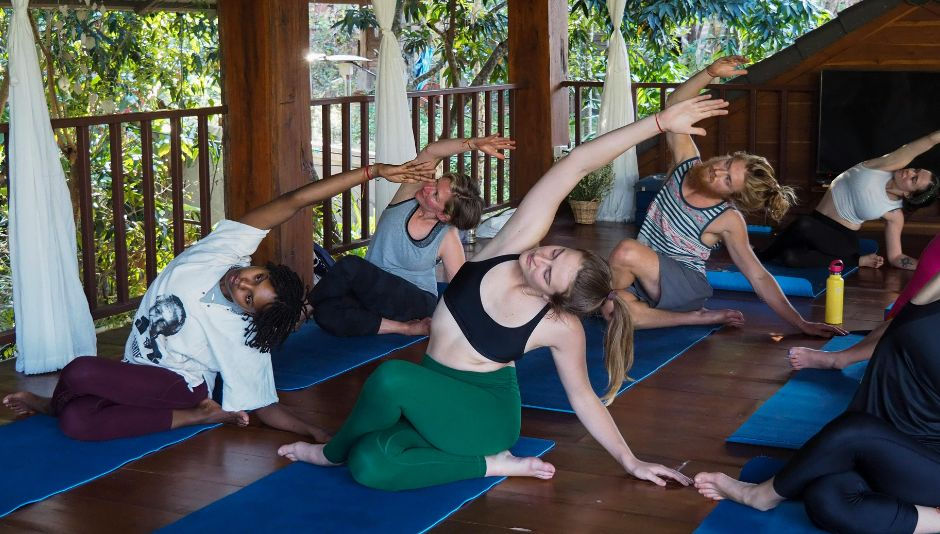Balancing Style and Function in Customer-Facing Environments
- Contributing Author

- Aug 6
- 3 min read
collaborative guest post
Creating a space that is both visually appealing and highly functional can be a challenging but rewarding pursuit for any customer-facing business. Whether you're operating a high-end members' club, a café with outdoor seating or a retail space, the environment you create plays a key role in shaping customer perceptions and experiences. Design decisions should not only reflect your brand identity but also accommodate day-to-day practicalities. Balancing style with usability ensures that the space is not just beautiful but also fit for purpose.

Sophisticated Comfort in Exclusive Spaces
The importance of atmosphere is particularly pronounced in settings designed for exclusivity and leisure. Venues such as members house soho offer a prime example of how interiors can merge elegance with function. In this type of environment, every detail from the furnishings to the lighting must enhance the visitor’s experience while supporting the operational needs of the venue.
Carefully chosen furniture, acoustics that favour privacy and lighting schemes that shift seamlessly from day to evening all contribute to a space that feels considered. At the same time, practicality underpins these choices. Easy-to-clean surfaces, durable materials and flexible layouts ensure that the venue continues to function efficiently over time. Businesses aiming to create refined, member-focused spaces can take inspiration from this careful integration of form and function.
Enhancing Outdoor Areas with Practical Seating
For customer-facing environments that extend outdoors, offering comfort without sacrificing durability is a top priority. Investing in commercial outdoor seating is a smart step for businesses looking to make their exterior spaces just as inviting as their interiors. Whether it’s a street-facing café, rooftop bar or a courtyard at a restaurant, outdoor seating encourages longer visits and improves overall customer satisfaction.
Unlike residential-grade furniture, commercial seating is built to handle high traffic and exposure to the elements. It is designed for both resilience and aesthetic appeal, helping to create a unified look across indoor and outdoor zones. From compact tables and chairs to lounge-style arrangements, these products can be adapted to suit a variety of spatial constraints and customer preferences. Ensuring that outdoor furniture blends with the branding and interior design enhances the sense of continuity across the business.
Intelligent Light Control for Better Environments
The management of natural and artificial light plays a significant role in customer comfort, whether in a restaurant, office or retail setting. commercial roller blinds offer a sleek and highly effective way to control light levels throughout the day. These blinds are especially useful in spaces with large windows, where glare or heat could interfere with customer enjoyment.
Beyond practical benefits such as reducing glare and protecting furnishings from UV damage, commercial roller blinds can also contribute to the interior design. Available in a wide selection of fabrics, colours and transparencies, they can complement or contrast with the existing palette to become a feature in their own right. Automated systems allow for easy adjustment throughout the day, improving energy efficiency and ensuring that the environment always feels just right for both customers and staff.
Designing with Flow and Function in Mind
The flow of people through a space affects everything from how comfortable it feels to how efficiently staff can operate. Smart layout decisions, supported by design elements like clearly marked pathways, adaptable furniture and zoned lighting, help guide customer movement and make the experience more intuitive.
Businesses that serve a diverse clientele from shoppers to diners to guests must consider how the space responds to different needs at different times. Flexibility is key. Modular furniture, moveable partitions and multi-purpose areas allow a space to evolve with usage patterns, events or seasonal changes. The result is a space that feels polished and intentional while remaining adaptable.
Branding Through Design
The most successful customer-facing environments use design to reinforce their identity. Every detail, from the floor material to the artwork on the walls, should tell a story about the business. This doesn't mean choosing aesthetics over practicality. Rather, it means identifying materials and elements that do both jobs well. Branding and functionality do not need to be in opposition; they can support and enhance each other.
A consistent and well-executed design fosters a sense of trust and familiarity. When customers feel that a space has been thoughtfully designed with their comfort in mind, they are more likely to enjoy their experience, return, and recommend it to others. By balancing style and function, businesses create not just a place of service, but a lasting impression.

































